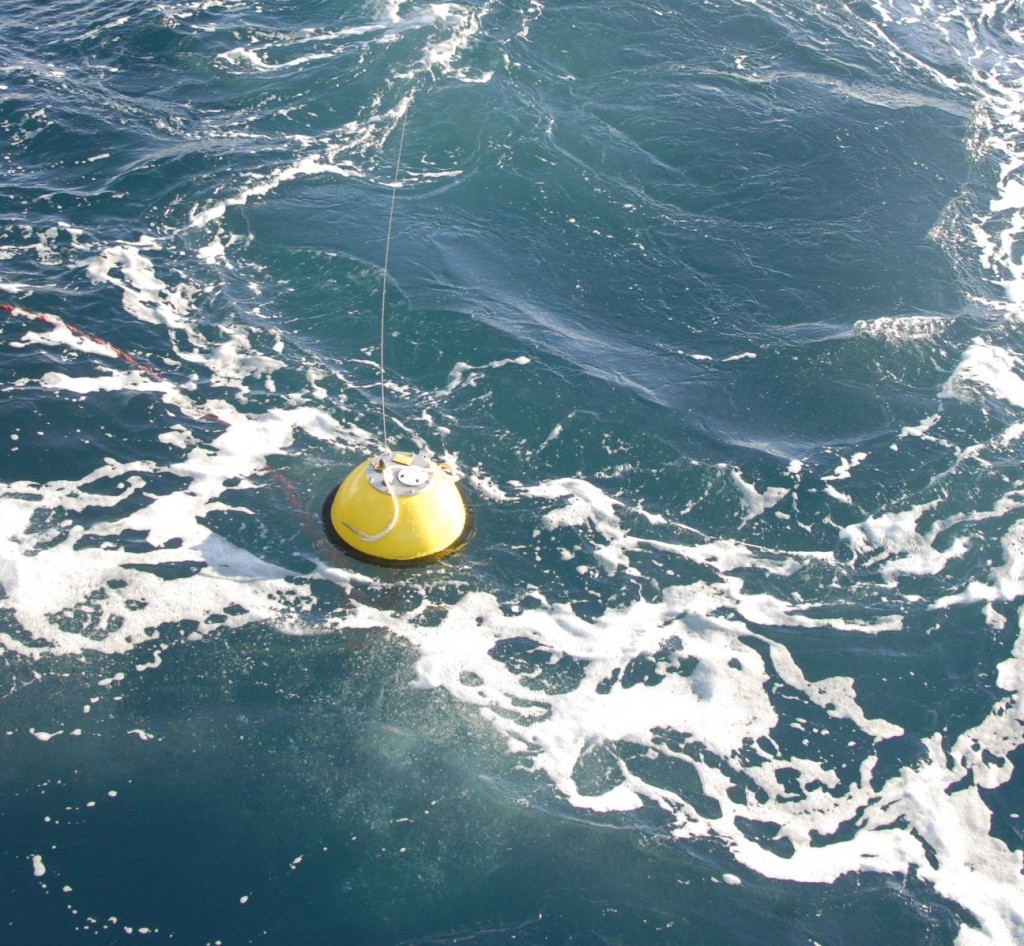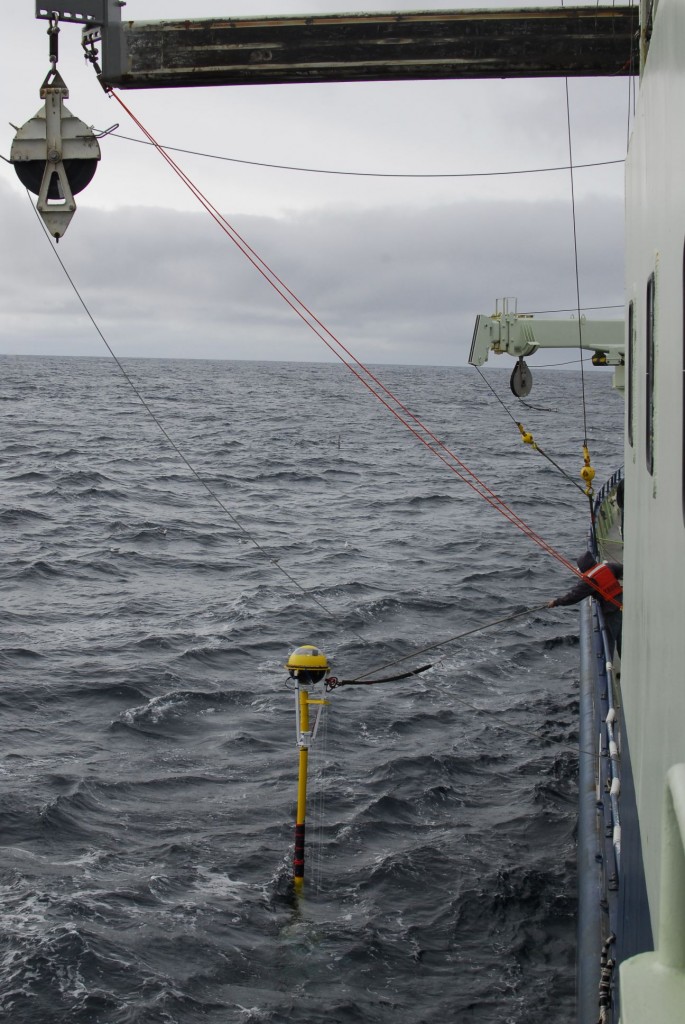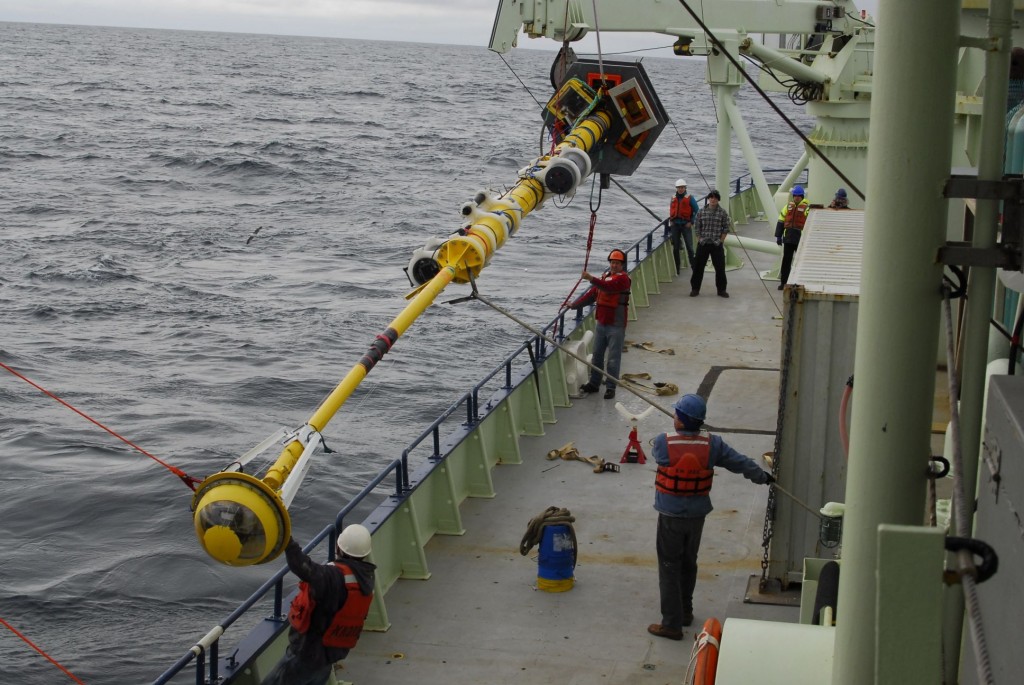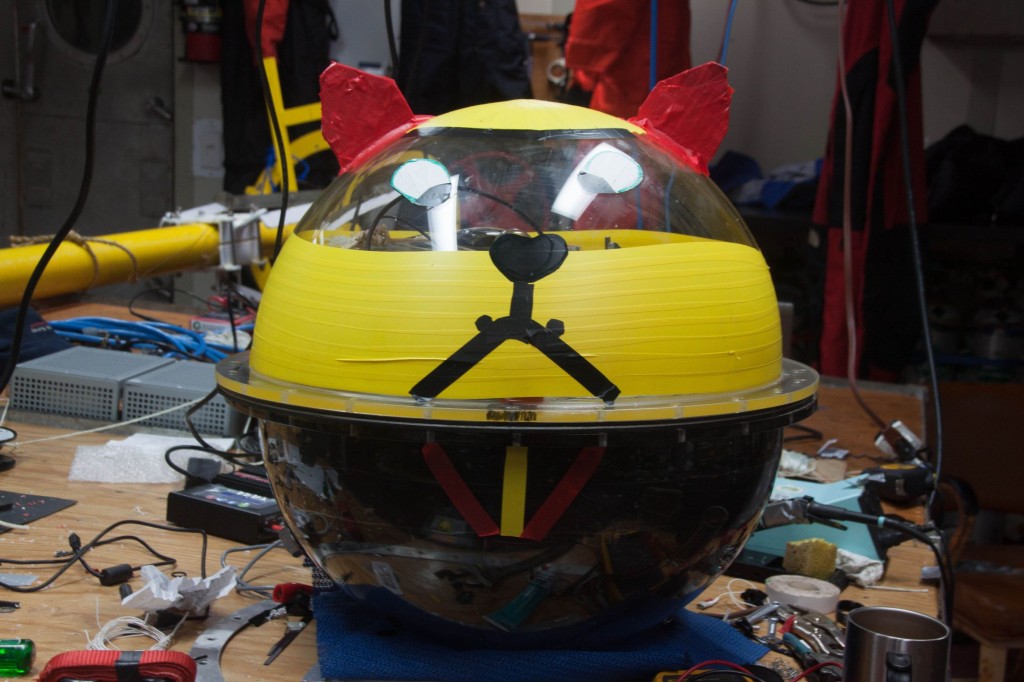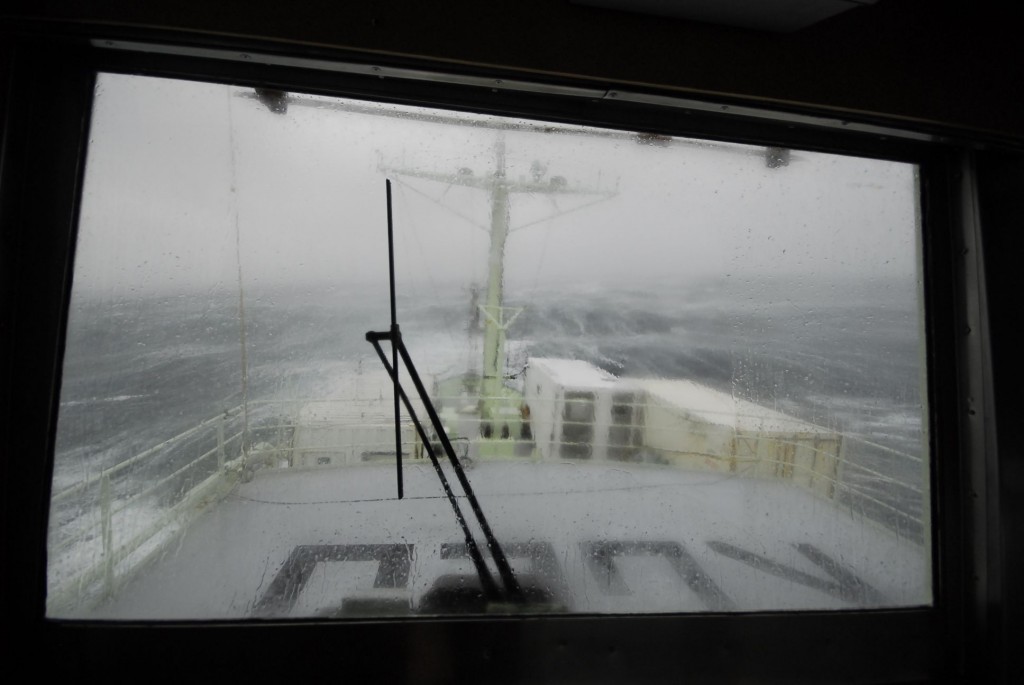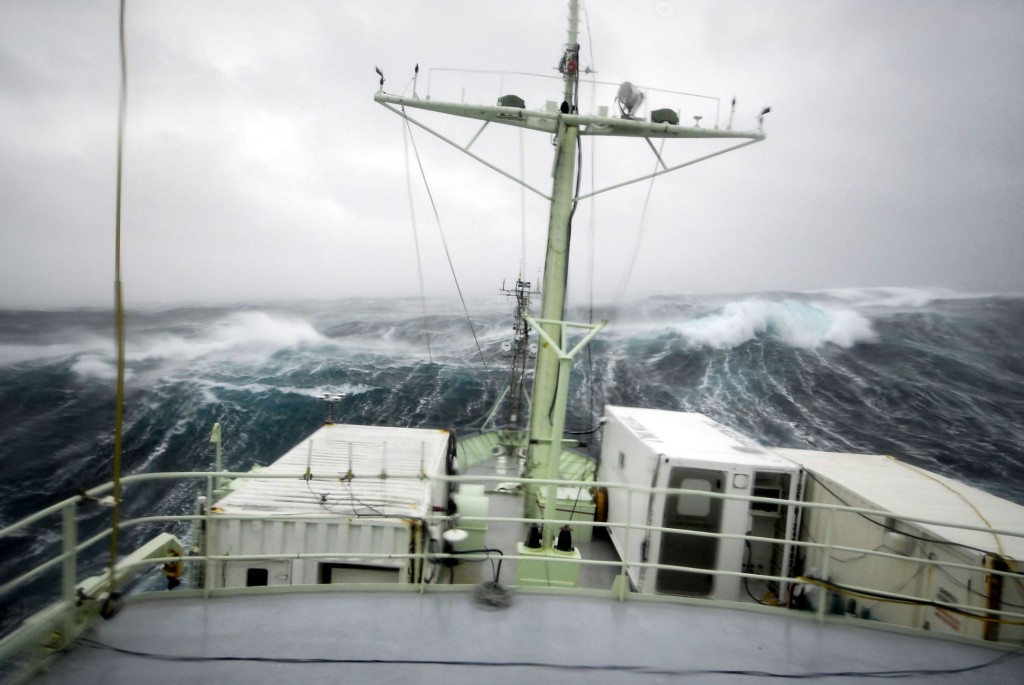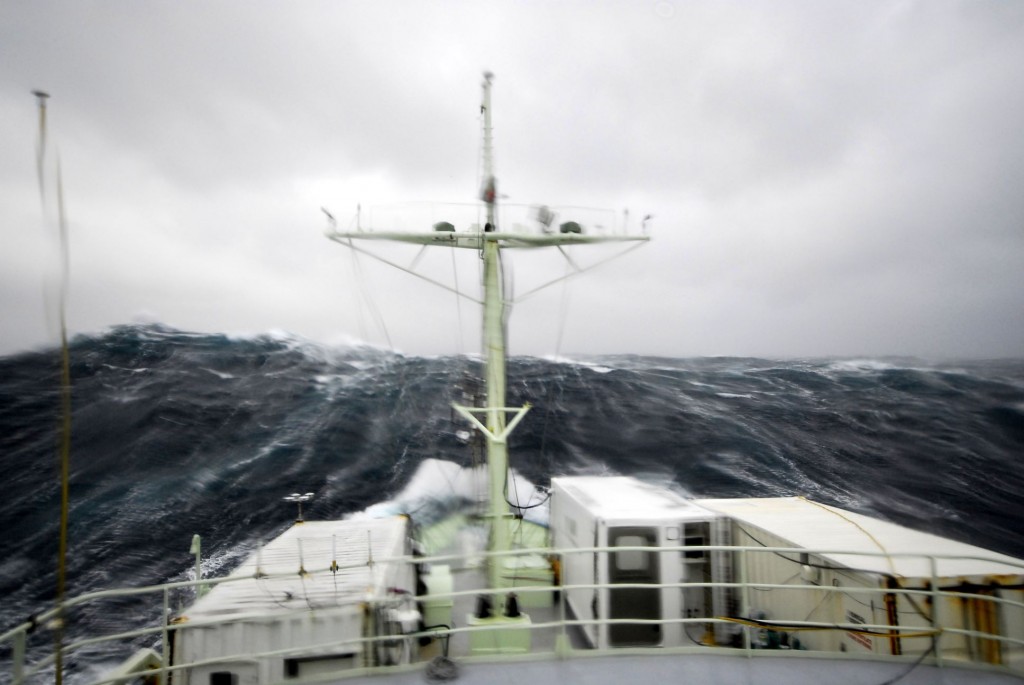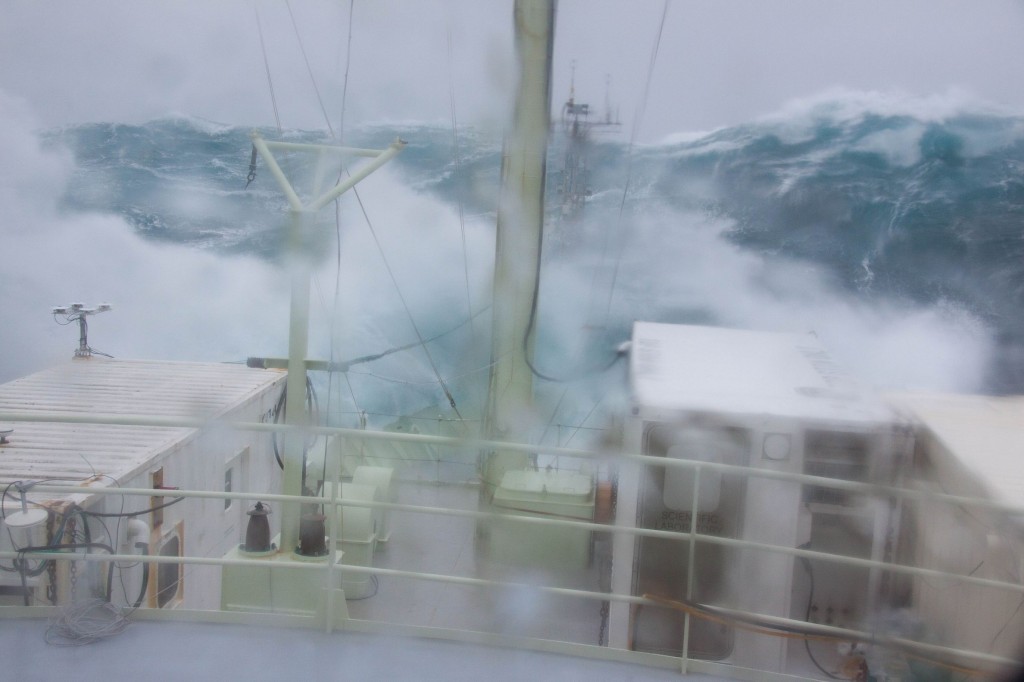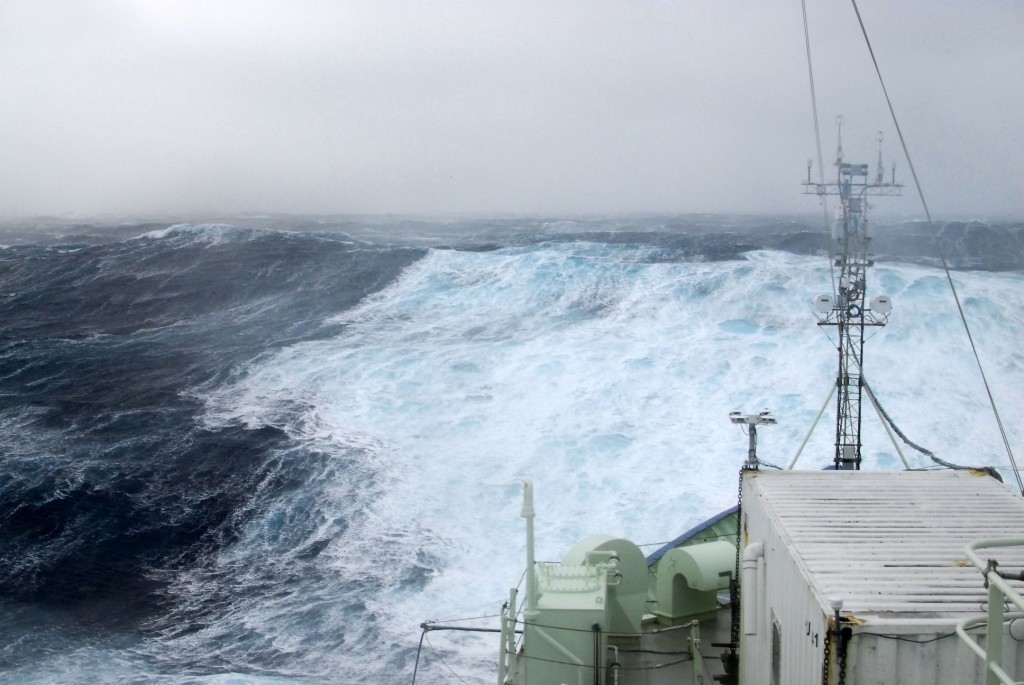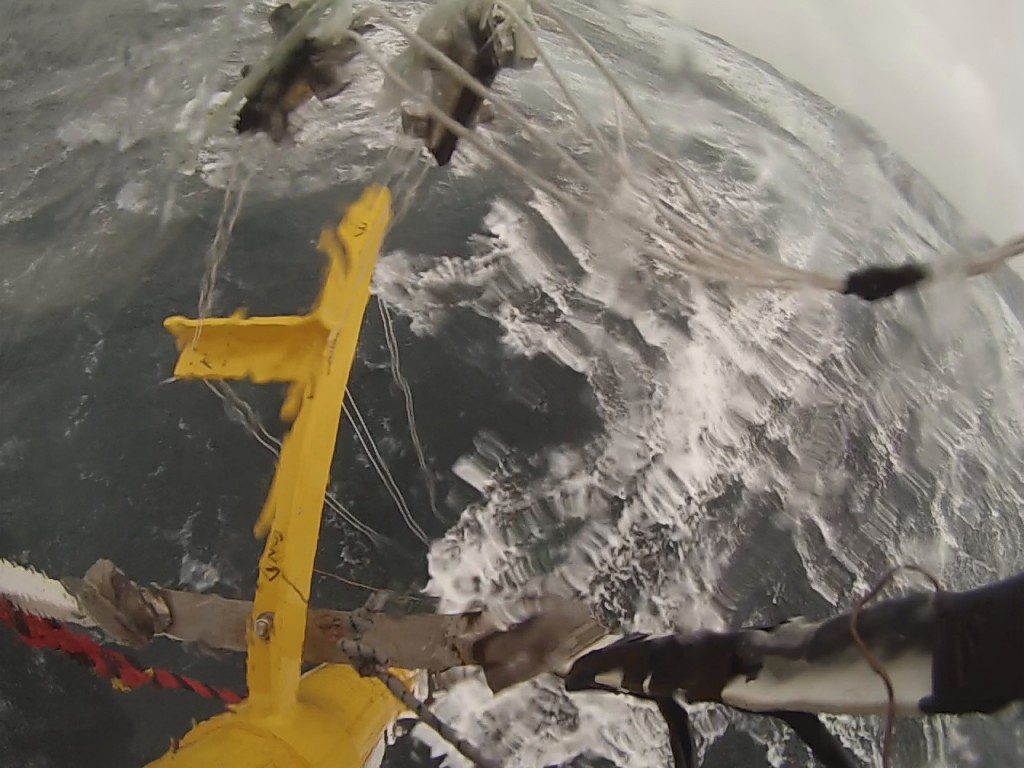In my previous blog post, I mentioned two instruments used to measure wave properties as part of this project – the waverider buoy and the spar buoy. These devices are deployed by our colleagues from the UK to measure properties like sea surface elevation, wave breaking and bubbles. Why is it important? The ocean acts like a big sink for anthropogenic carbon dioxide (CO2), but just how much and how fast it absorbs CO2 still remain unsure. At low wind speeds, we have a pretty good understanding of gas exchange rate between the atmosphere and the ocean. However a lot of uncertainties remain at higher wind speeds, mainly due to the lack of measurements to validate models. For instance at higher wind regimes, breaking wave generate air bubbles that get forced into the water column and this process plays an important role in gas exchange. But few measurements of breaking waves and bubbles have been made in such conditions, thus the two buoys to address that.
The waverider. It is a tiny wave motion sensor contained in a small sphere buoy and is usually tethered with a long line far away from the ship. It rides the waves and measures both the height and direction of each wave passing it.
The spar buoy. This is a much larger buoy which is 11 metres long and weighs about half a ton. It is equipped with capacitance wires and accelerometers to measure surface elevation and wave breaking, video cameras to obtain images of the sea surface, a current meter and acoustic and optical sensors to detect bubble clouds from breaking waves. Deploying the buoy is relatively easy but recovering it is quite challenging especially on a rolling ship.
As you can see above, the buoy got smashed on the side of the ship early in the cruise but fortunately nobody got injured. After that incident, the buoy was outstandingly brought back into shape by Robin, his team and the crew. It even got a new facelift and a nickname “Bob” (however the buoy name contest is still ongoing).
Since then Bob was redeployed and recovered several times without incidents. It even survived the massive storm we went through last weekend. And we were not disappointed! Last Friday, we sat in the biggest storm I ever encountered in my sea life thus far. The storm was named St Jude or Cyclone Christian by meteorologists and caused severe damages in Europe. Winds up to 194.4 km/h (120.8 mph) were reported in Denmark! When we met St-Jude at sea, we measured winds up to 29m/s (or 56 knots or 104 km/h), very close to category 1 hurricane. The measured significant wave height (defined as the height of the largest third of the waves) was up to 10m. In other words, on the field this means wave up to 15m… quite impressive. Most of us went up on the bridge to observe the raging waves. Here are some pictures to share this amazing spectacle with you. As a visual indicator, the forward mast at the ship’s bow is about 16m above the water line…
And here is the spectacle has seen from the spar buoy…
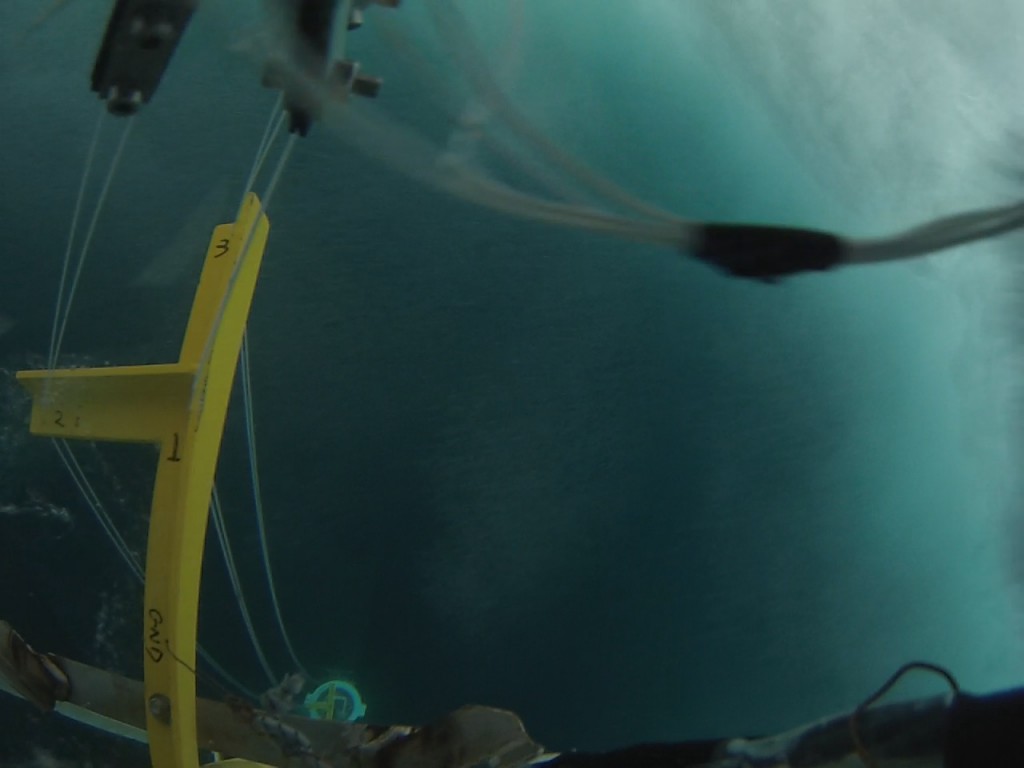
Bob is taking a plunge after a wave pushed him underwater! Can you see the bubble clouds? (photo credit: Robin Pascal)
After so much excitement, we decided to stay in the same area and we are currently going through another storm with winds in the 15-20 m/s range (29-39 knots). Interestingly this one is a hell more of a ride compared to St-Jude storm. While on station, we point the bow of the ship into the wind to get the best flux measurements. When the wind and the waves are aligned, that is somewhat gentle. But right now this is definitely not the case and as the ship points into the wind, the waves come sideways at the ship and it is a roller of a ride!
Unfortunately as a result of too much fun with the storms, we just found a power short with some of our flux instruments at the ship’s bow. Although we have redundancy and are still making good measurements, we are considering going into a sheltered area near St. Johns or in the Gulf of St Lawrence to fix the issue. It is too dangerous to do that in the current conditions and the weather forecasts show there’s not much happening in the next couple days over the whole area. After that, we might head to the Gulf of Maine to get different seawater conditions. Stay tuned!

